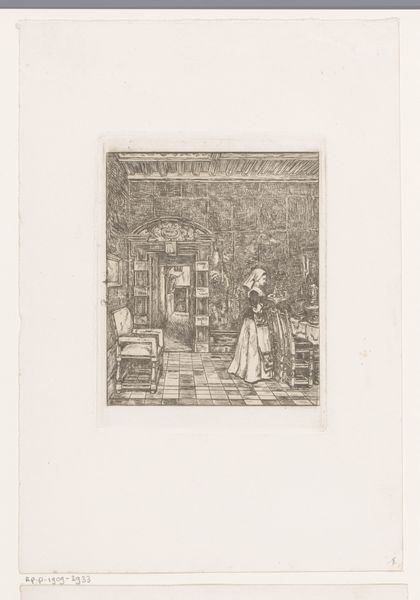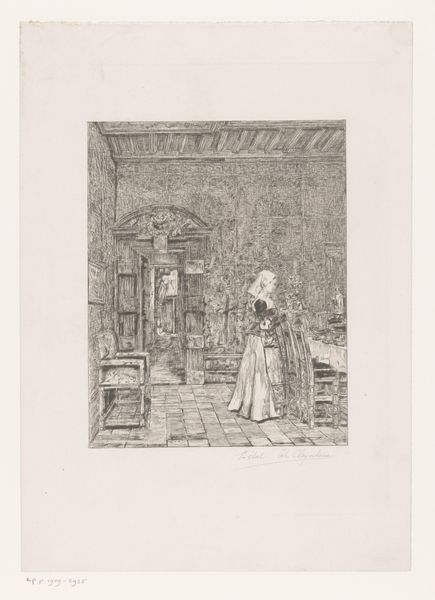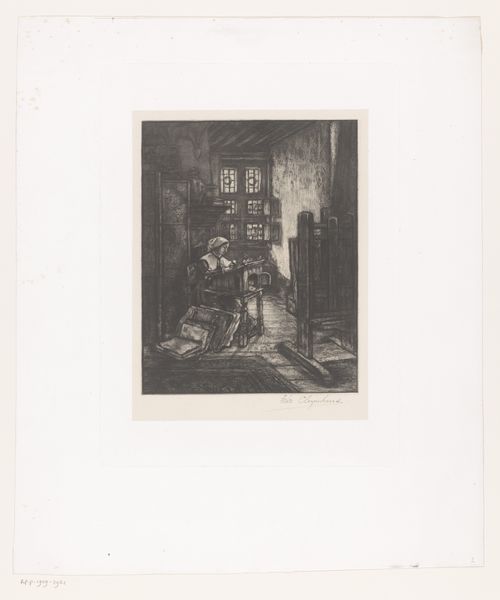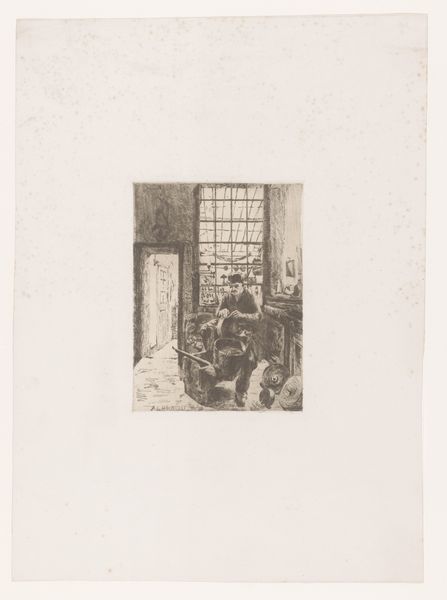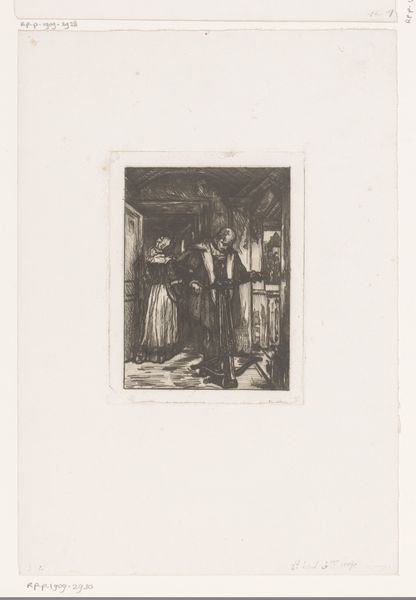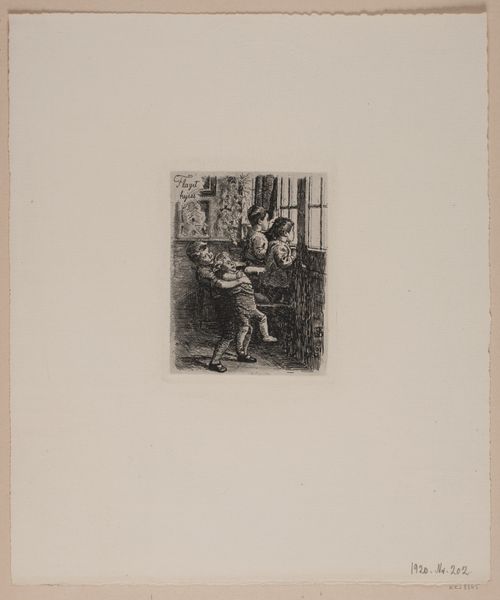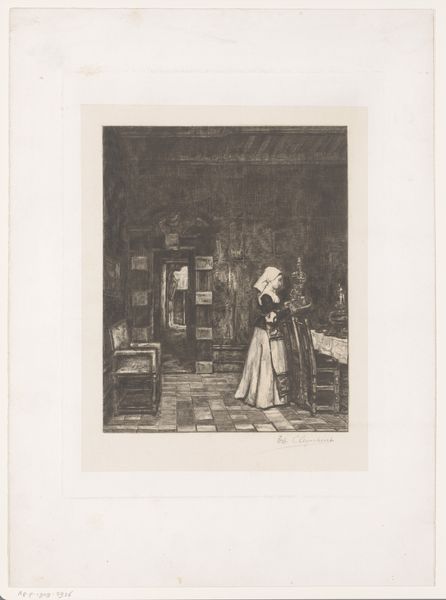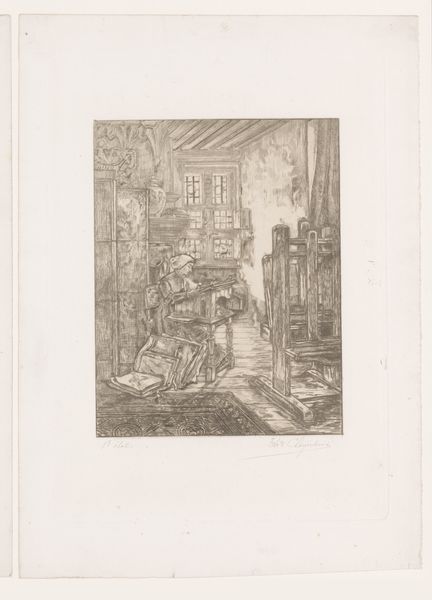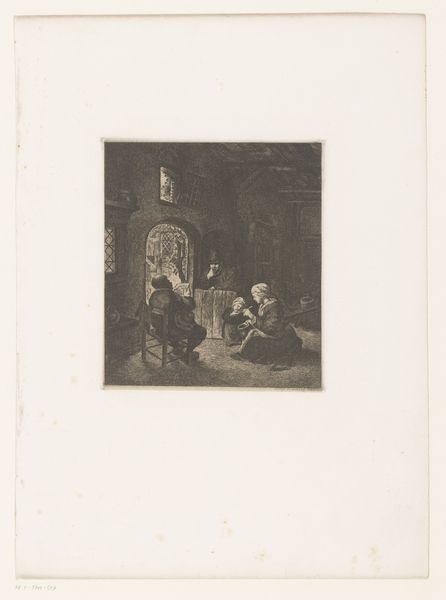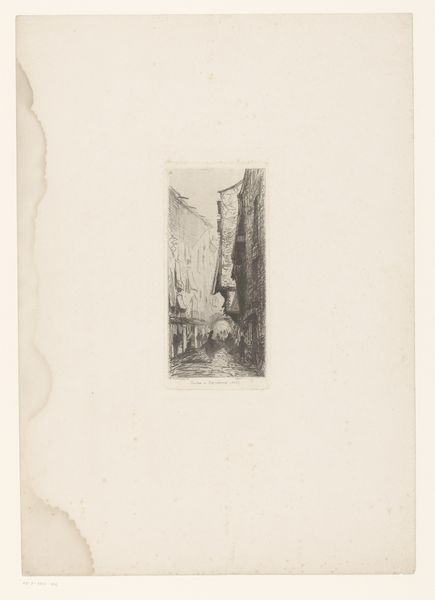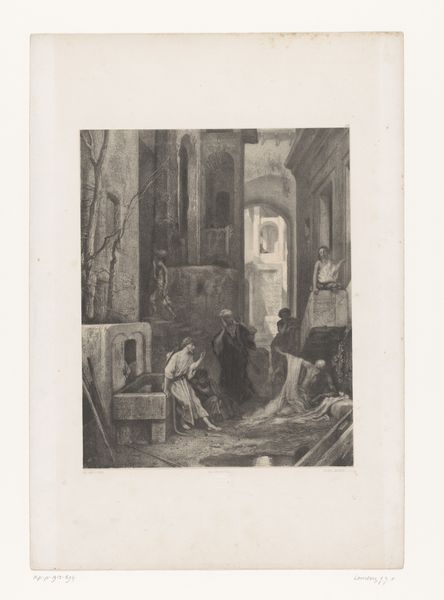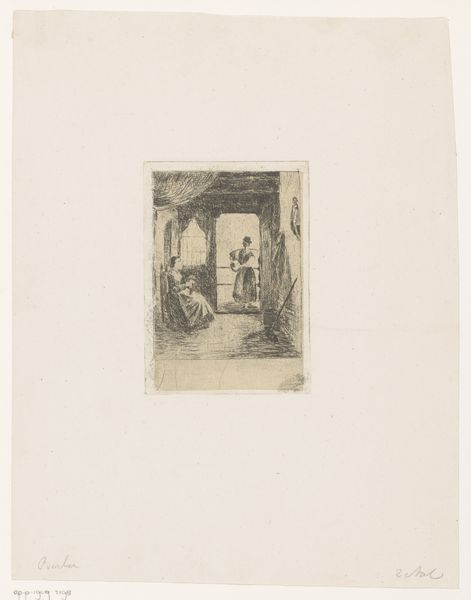
Jonge vrouw dekt een tafel in een rijkelijk gedecoreerd vertrek 1851 - 1909
0:00
0:00
drawing, print, etching, paper
#
drawing
# print
#
etching
#
paper
#
genre-painting
#
watercolor
Dimensions: height 149 mm, width 115 mm
Copyright: Rijks Museum: Open Domain
Curator: Let’s turn our attention to this print, "Jonge vrouw dekt een tafel in een rijkelijk gedecoreerd vertrek" by Théodore Joseph Cleynhens, likely created between 1851 and 1909. It is rendered in etching on paper. Editor: My immediate impression is one of formality, almost constraint. The composition feels tightly controlled, the use of line and contrast creating a distinctly somber, composed space. Curator: Indeed. I find myself drawn to consider the representation of domestic labor and gender roles during this period. The scene depicts a young woman preparing a table within a rather lavish setting. What does her gesture of service communicate about societal expectations and power dynamics? Editor: From a formal perspective, observe how the artist uses the tiled floor to establish perspective, guiding the viewer’s eye into the space. The geometry creates a rational order. The various frames on the wall break this strict perspective, though. It’s quite compelling. Curator: Precisely. Also, let's note the detail in her attire, a head covering along with layered garment. This etching makes me wonder, how does Cleynhens depict the sitter’s interiority through details in her clothing? I find it so telling that domestic scenes in art were so gendered then, and so too in our own, albeit different, times. Editor: The tonal range achieved through etching gives a wonderful depth and tactile quality to the surfaces depicted, particularly in the rendering of the patterned walls and the figure's dress. There's an almost obsessive quality to the textures here, but does that obsessive line work hint at the repetitive domestic work, too? Curator: Absolutely. By examining the scene through this lens, we can also extrapolate how labor and domesticity intersects with concepts of class and social status. We can’t help but consider her place within a specific societal echelon, influenced by historical biases. Editor: Looking at it once more, the control exhibited is incredible. But where are those breaks? The mirror, perhaps? What's going on there in that room? Is that another character? Curator: I believe that we could analyze it further and only uncover further complexity! I think we should conclude our commentary here, but urge listeners to reflect on what the interior reveals to us regarding the world. Editor: I second that. From the composition of shapes to social analysis, I encourage our audience to take what we've spoken of today and use it for future contemplation on visual construction!
Comments
No comments
Be the first to comment and join the conversation on the ultimate creative platform.
